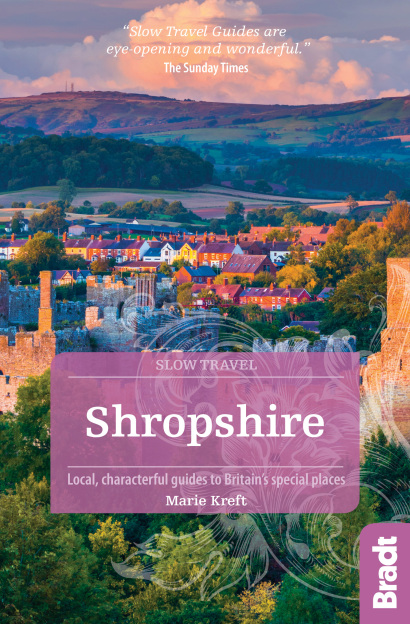Shropshire is a land of contrasts and its centre – dominated by the genteel town of Shrewsbury – has a touch of everything great about the county: medieval architecture, ancient woodland and, to the south, Mary Webb country and some highly respectable hills.
As well as a castle, Quarry Park and excellent museum, Shrewsbury has a lively arts scene, many independent shops, and some outstanding places to dine and drink. Shrewsbury is the birthplace of Charles Darwin, the naturalist whose 1859 On the Origin of Species furthered our understanding of the creation of the world and every living being in it.
As with all old towns and cities, a closer inspection of Shrewsbury will reward the curious-minded. You’ll find street names describing what was once sold there (Butcher Row, Milk Street … and don’t think too hard about the dark and narrow Grope Lane).
Despite this palpable sense of the past, Shrewsbury is alive with the here and now. A steady spring of smart new bars, independent restaurants and innovative shops makes me excited about every visit.
The best things to see and do in Shrewsbury
The Square and the Old Market Hall
Fronted by a statue of Clive of India and dominated by Old Market Hall, the Square is the centre of Shrewsbury. This has been a market area since the 13th century: today you’ll find two open-air markets a month: the Made in Shropshire market on the second Saturday and the Shrewsbury Farmers’ Market on the first Friday.
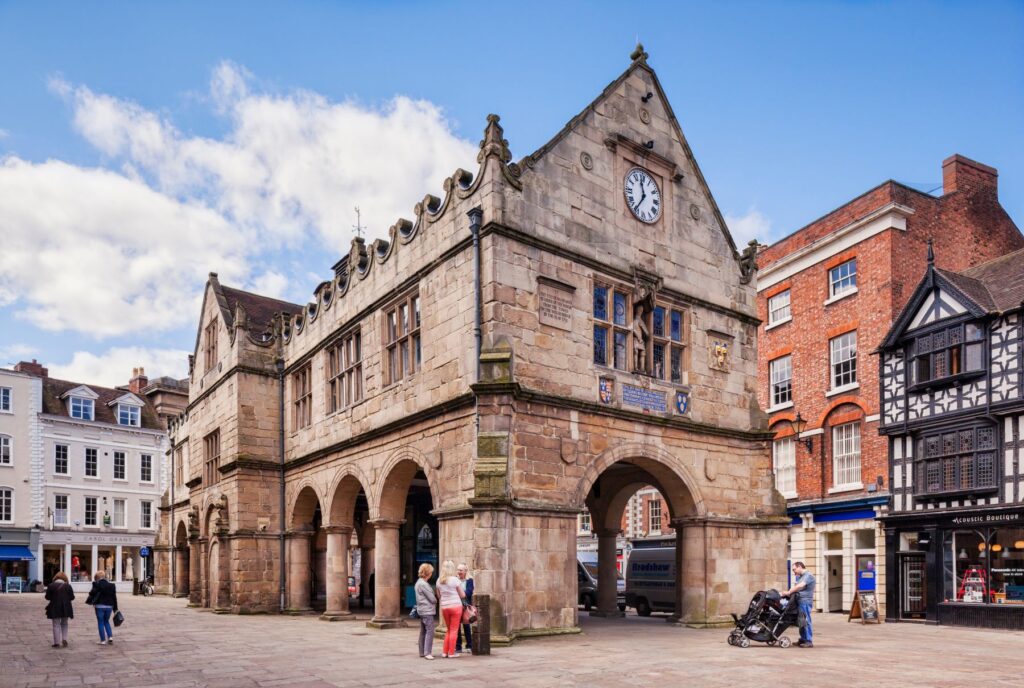
Samuel Taylor Coleridge once preached at the Unitarian church on nearby High Street. Dominating The Square is this stilted beauty in Grinshill stone, built between 1595 and 1596 by the Corporation of Shrewsbury. Originally the upper room would have been used by drapers and the lower floor, exposed by archways, used by farmers selling corn. This site has seen public hangings, a travelling crocodile exhibition and, in the Square in Victorian times, a live unwrapping of an Egyptian mummy with little pieces given away to spectators.
Nowadays Old Market Hall’s entertainment is rather more civilised. Redevelopment carried out in 1999 created a smart new café and 81-seat independent cinema, which uses the original beamed Tudor ceiling built by wool merchants.
Shrewsbury Cathedral
Along Belmont at the Town Walls is Shrewsbury’s Roman Catholic cathedral. Commissioned by John Talbot, the 16th Earl of Shrewsbury, its architect was Augustus Welby Pugin – a convert to Catholicism who had a pioneering role in the Gothic Revival style.
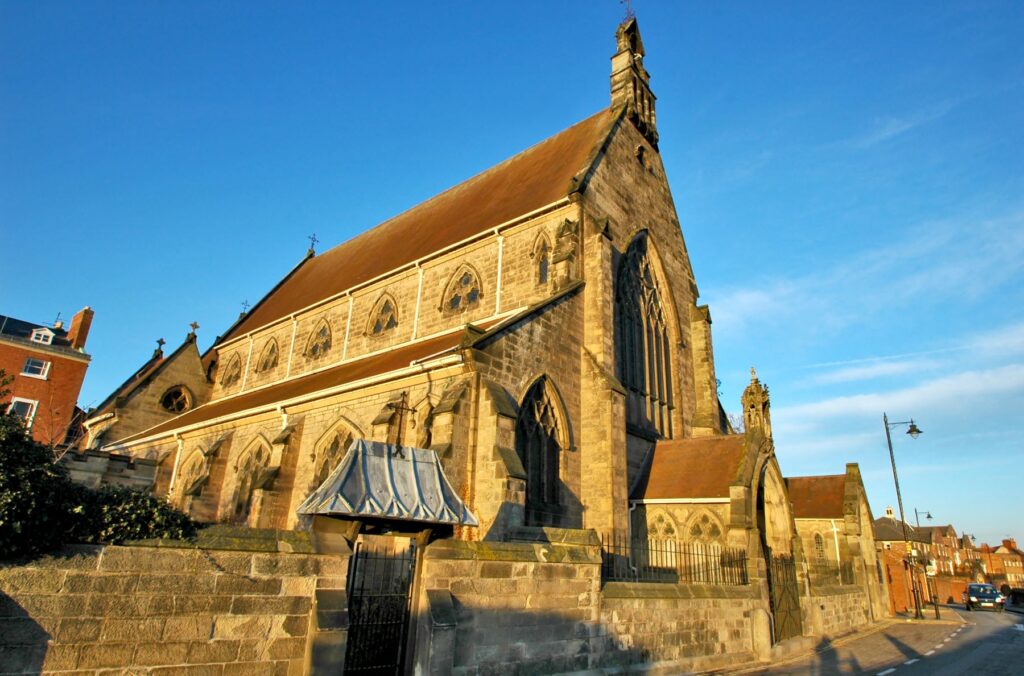
Pugin, who regarded the Classical style as ‘pagan’, was also responsible for the elaborate gilt work, panelling, carvings and other fine details in the Palace of Westminster. Also along Town Walls is Shrewsbury’s last remaining 14th-century watchtower. It’s managed by the National Trust and open on a handful of days each year.
Shrewsbury Abbey
While Shrewsbury Abbey has lost much of its glory, there is plenty to reward the modern visitor, including a 13th-century effigy thought to be of Roger de Montgomery (former Earl of Shrewsbury who founded the abbey in 1083) and chest tombs acquired in the 18th century when Old St Chad’s fell down and Old St Alkmund’s was pulled down.
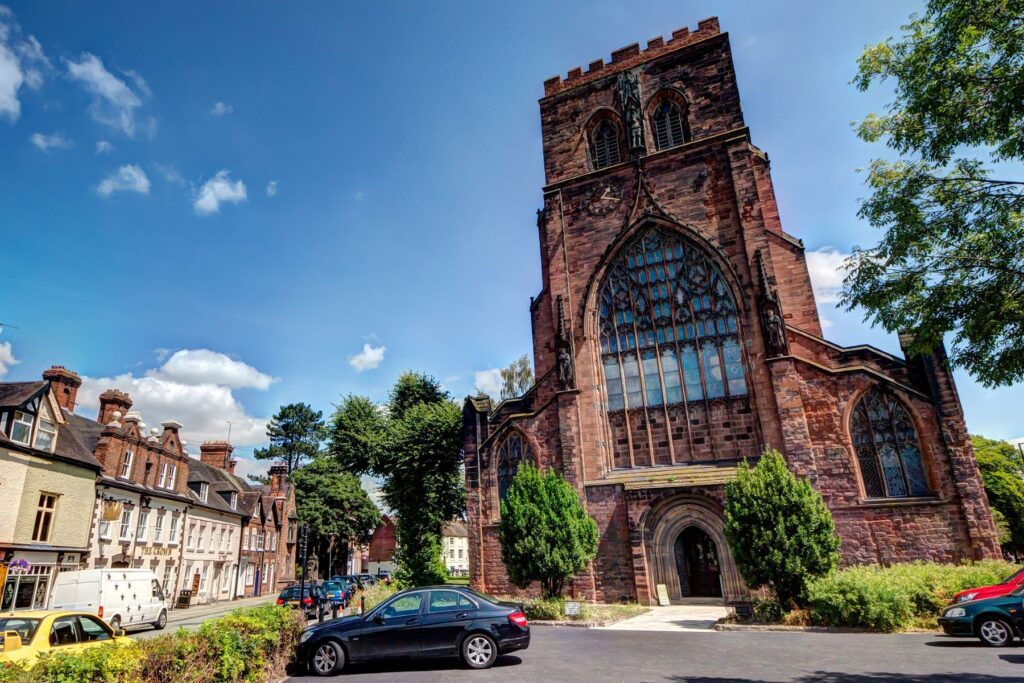
The size of the abbey today represents neither its humble beginnings as a wooden Saxon chapel nor its monastic span of Norman times. You can gauge the latter by looking for the 14th-century refectory pulpit, which stands in ruined isolation across the road. In 1137 the monastery acquired what every 12th-century monastery needed: holy relics. The remains of St Winefride were brought from Gwytherin in north Wales and interred in a shrine, attracting pilgrims, wealth and power.
Quarry Park
The south of Shrewsbury town centre, gently cupped in the meander of the Severn, is dominated by a 29-acre ornamental park with iron entrance gates cast at Coalbrookdale. Known as the Quarry or Quarry Park, its history as a working mine is revealed only in name, the past hidden now by the lime-tree-lined riverside promenade, children’s playground, Victorian bandstand and rose garden opened to celebrate the Queen Mother’s 100th birthday.
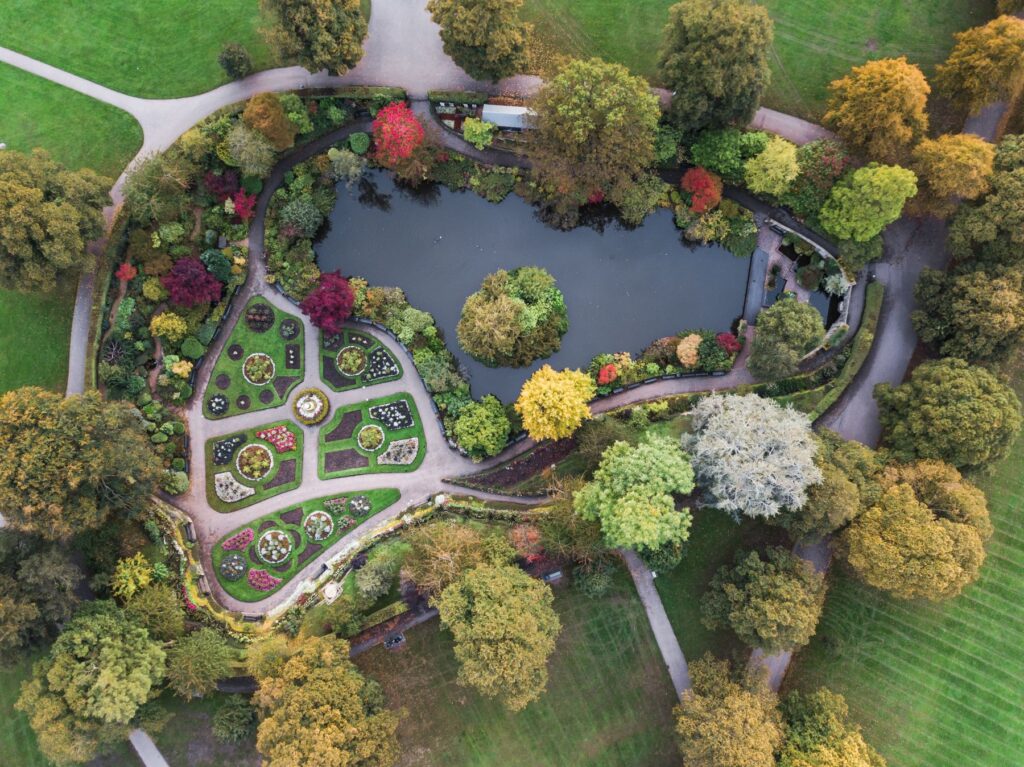
Over the swan-gilded river, whose banks in the summer blossom with fragrant pink flowers of Himalayan balsam, you can see Shrewsbury School and the toll-charging Kingsland Bridge under which one daring Captain Collett flew his plane in 1918. The parkland’s intimate centrepiece is the Dingle, once a stone quarry and now a sunken flower garden with lake and winding paths.
Shropshire Regimental Museum in Shrewsbury Castle
Shrewsbury Castle may not be the finest-looking fortress in the land, but it sure was placed in a sensible position, overlooking the Severn’s meander on the site of an Anglo-Saxon fortification. The Victorian artist H Thornhill Timmins quoted an ‘old writer’ who said the castle was ‘built in such as brave Plott that it could have espyed a Byrd flying in every Streete’.
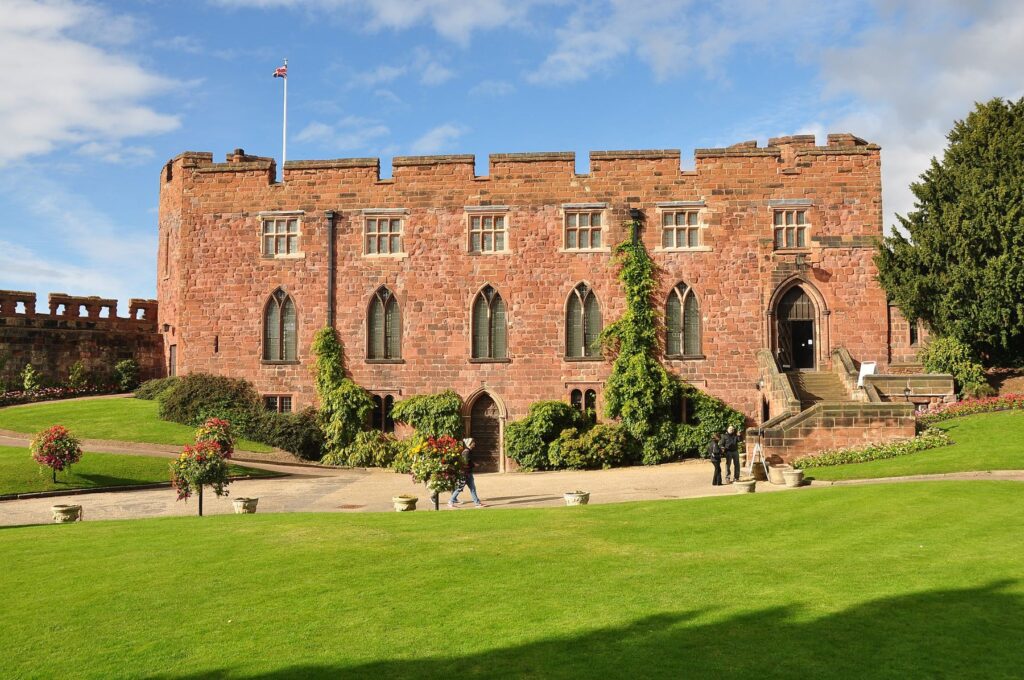
Since 1985 the castle’s dignified interior has held the collection of the Shropshire Regimental Museum Trust: medals, pictures, weapons and uniforms dating from the 1700s. One of the most significant exhibits is the decorative baton given to Grand-Admiral Karl Dönitz by Adolf Hitler in 1943. Dönitz succeeded Hitler following his suicide and, when Dönitz and his remnant Nazi government were arrested by the 159th Infantry Brigade, the baton was handed over as a token of surrender.
You’ll need to pay a small admission fee for the castle, but you can visit the grounds and Laura’s Tower on the Norman motte summit for free. The inside of the one-room sandstone tower is currently inaccessible to visitors but the plateau on which it stands has long views over Shrewsbury Abbey to Lord Hill’s Column and beyond to The Wrekin.
Around Shrewsbury
Battlefield
Three miles north of Shrewsbury in the parish of Albrighton is the village of Battlefield, named because it was here – or near here – that the 1403 Battle of Shrewsbury took place. The bloody skirmish between Henry IV’s men and the rebel army led by Henry ‘Hotspur’ Percy was immortalised in Shakespeare’s Henry IV Part I.
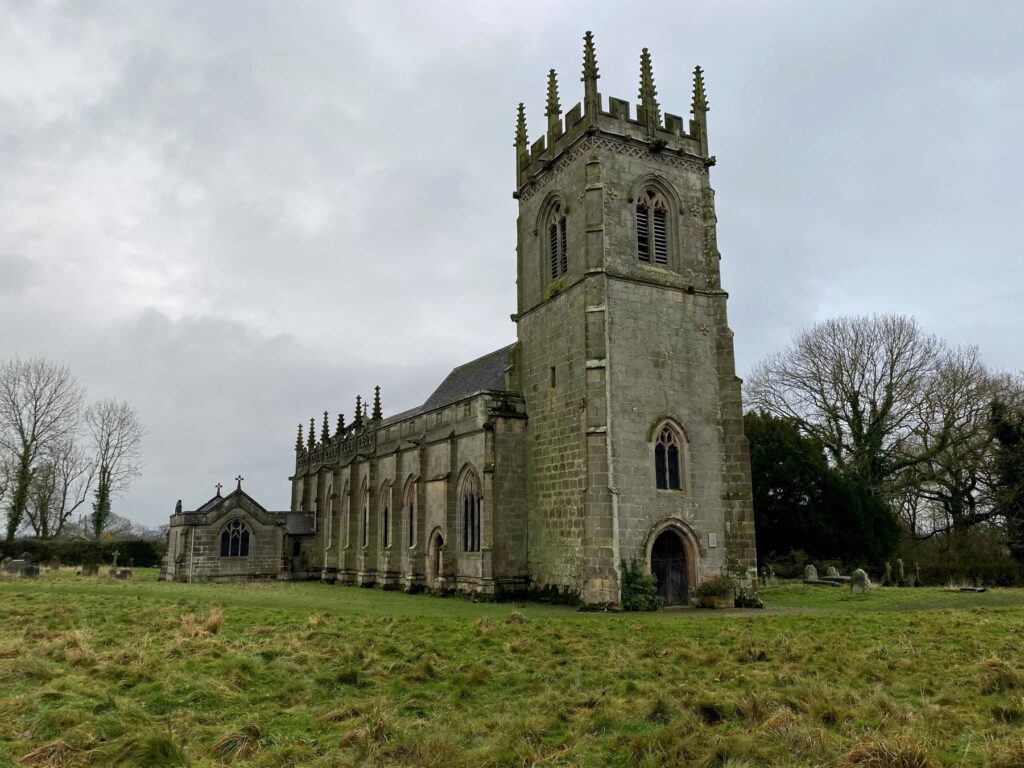
The pleasingly stocked farm shop on the site has its own deli and butchery: the beef and lamb are raised on the estate, while most of the other produce is sourced from Shropshire and bordering counties. Sparrow’s Café has won Great Taste and Countryside Alliance Awards; it wins my heart for its super-local menu and knight-size slices of homemade cake.
With a free children’s trail, it’s now fun for all the family to collect the key from the shop at Battlefield 1403 and make the quarter-mile walk across the alleged battlefield (no bones have ever been unearthed) to the church of St Mary Magdalene. It was the eve of the feast day of St Mary Magdalene in 1403 that King Henry IV triumphed over rebellious marcher lords. Built soon afterwards, between 1406 and 1408, to commemorate the thousands killed in the battle, the church was restored by Shrewsbury architect Samuel Pountney Smith in 1860–62.
The treetop ropes course in the grounds of nearby Albrighton Hall Hotel & Spa is part of the offering from outdoor pursuits provider Shropshire Adventures. Bird-handling sessions and day-long falconry experiences can be booked in advance, including the ever-popular Hawk Walk.
Attingham Park
The Palladian-style mansion house was designed by George Stueart and built from Grinshill stone in 1785 for the first Lord Berwick. Inside the mansion are three floors to view, telling the fascinating story of the Berwick family whose motto ‘Let wealth be his who knows its use’ is poignant once you know how dramatically their fortunes ebbed and flowed over the years.
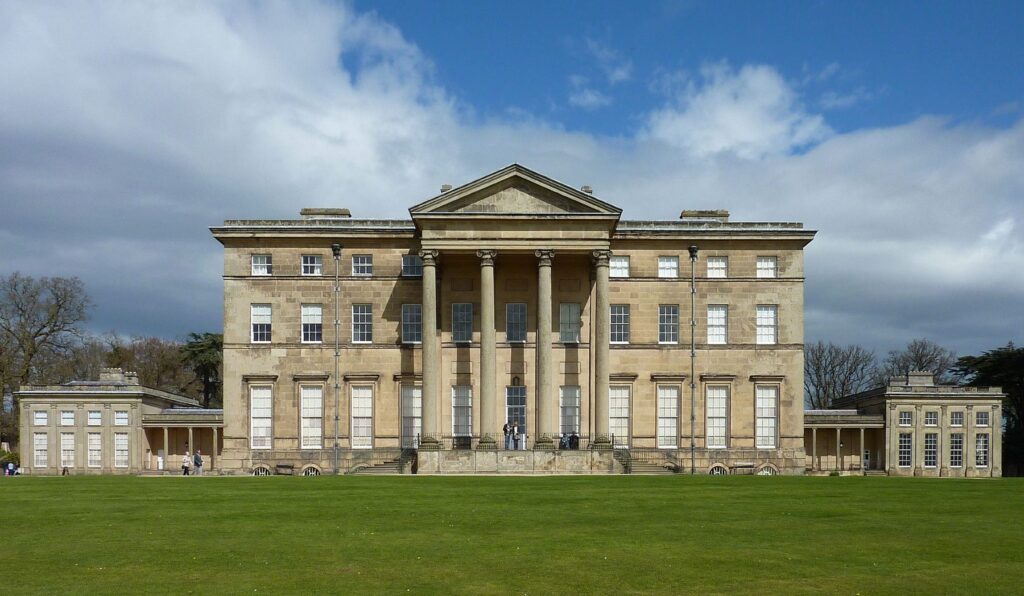
In 1805 the extravagant second Lord Berwick (who in his 40s married an 18-year-old courtesan, Sophia Dubochet) appointed architect John Nash to create the glazed roof picture gallery. Nash would later work on Brighton Pavilion and Buckingham Palace to great acclaim, but his design for Attingham Park was flawed and the roof always leaked. A £1.4 million conservation programme has seen a new steel and glass roof placed over the original.
Attingham’s parkland covers around 4,000 acres and, although that’s only half the area it claimed in the early 1800s, you can still spend entire afternoons getting joyfully lost, exploring the woodland, deer park, walled garden and – for children and their parents – the expansive Field of Play (sometimes called the Shoulder of Mutton due to its shape), with tunnels, dens and logs.
Wroxeter Roman City
The remains of the Roman City at Wroxeter may not be extensive, but with aid of the audio guide and well-written interpretive panels, it’s easy to envisage the glory days of Uriconium, when the vast open basilica was used for exercising, socialising and relaxing before the city’s Roman residents retreated to their bath house, kept humid with furnaces. At 23ft high, the Old Work – the ruined wall at the centre of the site – is the biggest piece of freestanding Roman wall in Britain.
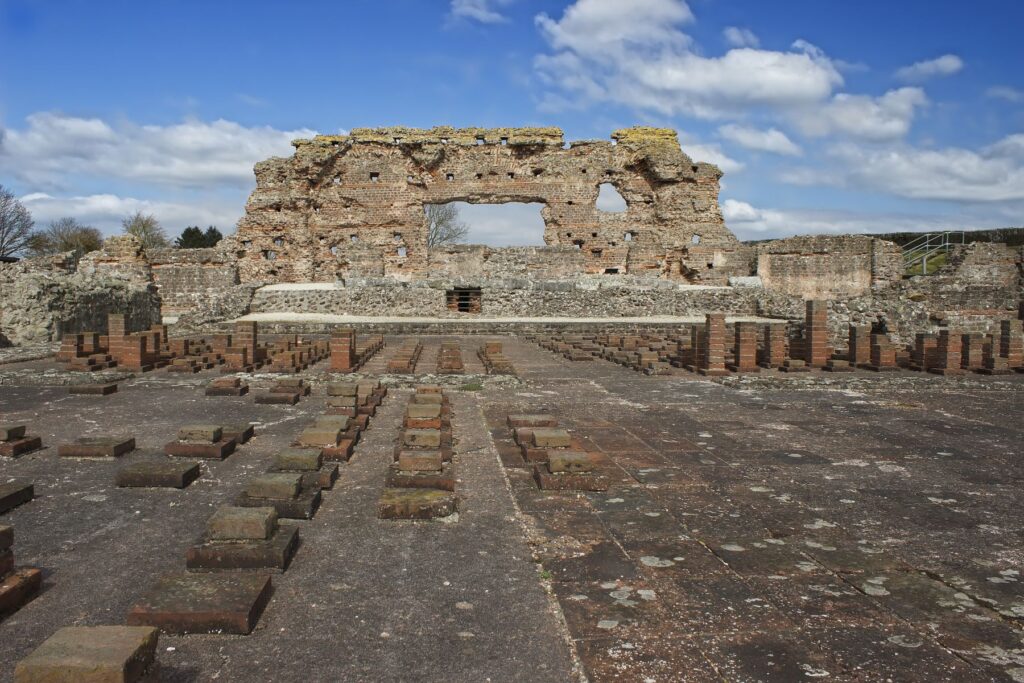
Over the years the site has yielded one of the most extensive collections of artefacts from Roman Britain. A solid silver mirror found in the 1920s now resides at Shrewsbury Museum and Art Gallery, alongside other treasures, and you’ll find excavated pottery, coins and jewellery in the museum at Wroxeter.
In a memoir, the Shropshire poet-novelist Mary Webb wrote of the Roman camp: ‘Nothing dies if one has the love to keep it alive.’ I think that’s true of Wroxeter more today than ever, with English Heritage working hard to bring new audiences and understanding to the site. A decade ago, as part of a Channel 4 programme called Rome Wasn’t Built In A Day, six builders with help from volunteers reconstructed a Roman town house (villa urbana) using only tools known to the Romans, and local materials.
Where to eat and drink in Shrewsbury
The Boathouse
On the banks of the Severn by Porthill Bridge, overlooking Quarry Park, is one of Shrewsbury’s best-loved pubs.
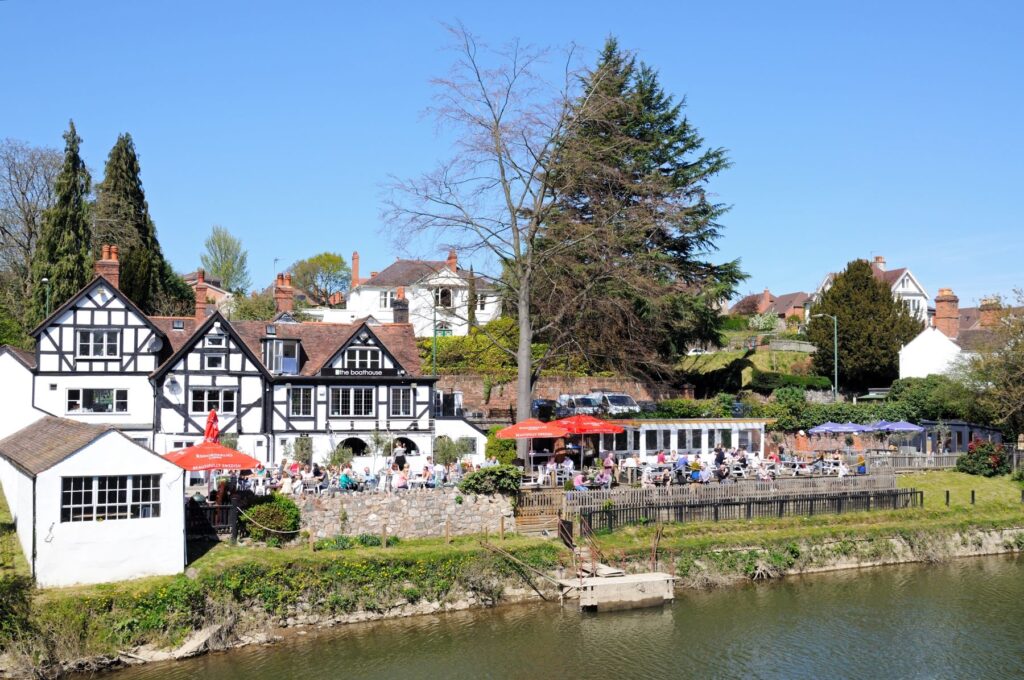
The setting is so relaxing it’s hard to imagine that the building served as a pest house during the plague of 1650. Don’t let this put you off the good food, which features well-presented grills and pub classics with a twist.
Market Hall Shrewsbury
For a bargain-price lunch you can’t go far wrong with Market Hall. I’m especially impressed with the Bird’s Nest Café – a space lit by fairy lights, serving wholesome, tasty (and often local, fair trade and organic) food – and the Chinese dumplings at Moli Tea House.
The Golden Cross
Even if the food weren’t great at this upscale inn, it would still provide an atmospheric hideaway for a drink – and indeed it’s been keeping the people of Shrewsbury watered for almost 700 years.
Luckily, the posh pub food matches the stylish ambience. The Golden Cross is also a boutique hotel.
